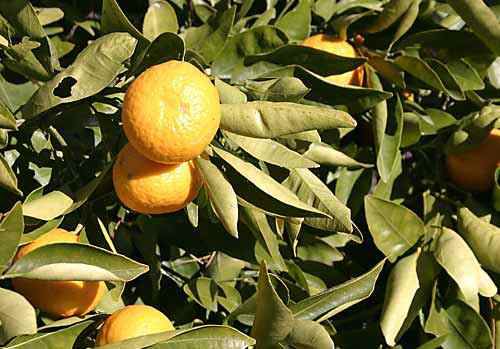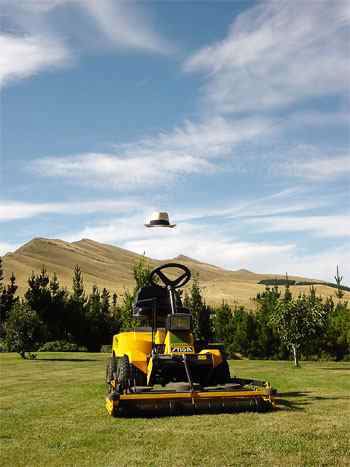Monday dawns sunny and warm. By the time I've got the tractor full of diesel and hooked up to the cultivator (and the iPod firmly attached to my belt), I'm beginning to feel distinctly hot. There's a bit of a nor'wester blowing, the sky is very blue, and the tractor is behaving itself, so I tie the amazingly charming truffle hound to her chain (to prevent her disappearing, tail up, in pursuit of me, but mostly rabbits - for hours) and chug off to the truffière. The tillage proceeds well. The tines (see first entry in this category) are supposed to loosen up the top 10 to 20 cm of soil, generally aerating things before the truffle mycelium begins its spring growth. This is supposed to encourage the formation of truffles. I live in hope.
At lunchtime, the hound is ridiculously pleased to see me. She's been wailing piteously, I'm informed. News to me, of course, because a rusty old Kubota that saw its best days on a Japanese rice paddy is not the quietest tractor on the planet, and it was being masked by the iPod on random play. Apple assure us that track sequencing really is random, but it is astonishing how often a sequence of tracks presents itself as perfect for the circumstances. I only had to skip tracks once or twice. Sigùr Ros are not the ideal soundtrack for truffière-tilling.
The afternoon starts warmer, if anything. Over 20¼C, at a guess (I'll know more in a few months, when the air temperature datalogger in the truffière is downloaded). The cultivation continues with only a few minor hassles, but at 4pm the wind changes direction and a band of cloud starts motoring across the sky from the south. Distinctly chilly blasts start whistling down from Mt Brown. By 5pm I've finished. The sky is covered with ominous cloud and it's getting parky. So I return to the farm and the dog (whimpering with delight), and set about lighting fires to warm the place up.
By Tuesday morning there's snow on the ground - about 5cm, at worst - and the temperature's hovering around 1¼C. Spring weather on the east coast of New Zealand is notably variable, but this is ridiculous. The upside is that all this moisture is going into the freshly tilled soil - brilliant preparation for some serious tree growth - unless, of course, we get some hot gale nor'westers in the next month to burn all the young leaves before they have a chance to toughen up.
Now I've only got to till the two small plantations of trees infected with Tuber borchii and Tuber uncinatum, and the majority of the spring work will be finished. Apart from the mowing - but the news there is not good. My ride-on has suffered terminal engine failure (bits of metal have been thrashing around inside doing nasty things that have only expensive remedies), and I have to fork out for a new motor. Bugger. And the grass is still growing.




.jpg)


